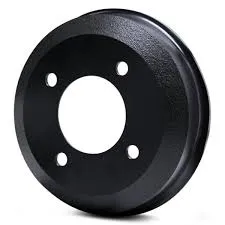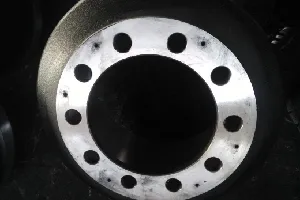Feb . 19, 2025 06:11
Back to list
explain how drum brakes create a self multiplying brake force
Drum brakes, an older but reliable technology, remain a staple in many vehicles worldwide due to their cost-effectiveness and robustness. They operate on a principle that offers unique advantages—self-multiplying brake force. Understanding this concept requires an examination of drum brake components and their intricate mechanics.
Proper maintenance ensures that this system continues to function optimally. Regular inspections for brake shoe wear, hydraulic fluid levels, and drum surface condition are critical. Any irregularities, such as uneven wear on the brake shoes or damage to the drum, can impair performance and negate the self-multiplying feature. A real-world advantage of self-multiplying brake force is evident in vehicles that frequently stop and start under load. Heavy-duty trucks, for instance, benefit from drum brakes as they can maximize braking efficiency with minimal pedal pressure, thanks to the self-energizing mechanism, which is inherently robust in variable operating conditions, including those involving heat and debris encountered in severe environments. Despite the emergence of disc brakes, especially in performance and high-end vehicles, drum brakes maintain a stronghold in specific applications due to their cost efficiency, simplicity, and powerful self-multiplying braking assistance. Their simple, durable construction and self-energizing quality continue to make them a viable option in various automotive sectors. In professional and consumer contexts, it’s essential to understand how self-multiplying brake force contributes to vehicle safety and performance. This knowledge not only enhances trust in drum brakes but underscores their relevance in modern automotive engineering. After all, mastering the dynamic interplay of the components in a drum brake system reflects industry expertise and an appreciation for mechanical finesse.


Proper maintenance ensures that this system continues to function optimally. Regular inspections for brake shoe wear, hydraulic fluid levels, and drum surface condition are critical. Any irregularities, such as uneven wear on the brake shoes or damage to the drum, can impair performance and negate the self-multiplying feature. A real-world advantage of self-multiplying brake force is evident in vehicles that frequently stop and start under load. Heavy-duty trucks, for instance, benefit from drum brakes as they can maximize braking efficiency with minimal pedal pressure, thanks to the self-energizing mechanism, which is inherently robust in variable operating conditions, including those involving heat and debris encountered in severe environments. Despite the emergence of disc brakes, especially in performance and high-end vehicles, drum brakes maintain a stronghold in specific applications due to their cost efficiency, simplicity, and powerful self-multiplying braking assistance. Their simple, durable construction and self-energizing quality continue to make them a viable option in various automotive sectors. In professional and consumer contexts, it’s essential to understand how self-multiplying brake force contributes to vehicle safety and performance. This knowledge not only enhances trust in drum brakes but underscores their relevance in modern automotive engineering. After all, mastering the dynamic interplay of the components in a drum brake system reflects industry expertise and an appreciation for mechanical finesse.
Next:
Latest news
-
Brake Drums for Trucks | OEM-Grade, Factory DirectNewsNov.10,2025
-
High-Performance Brake Drums for Trucks | OEM & ISONewsNov.10,2025
-
Brake Drums Built to Last — OEM-Grade, Balanced for TrucksNewsNov.10,2025
-
Brake Drums for Trucks – OEM-Grade, Durable, Low NoiseNewsNov.10,2025
-
Brake Drums for Trucks | OEM, ISO-Certified, Fast DeliveryNewsNov.10,2025
-
Brake Drums: OEM-Grade, Precision Balanced, Factory DirectNewsNov.03,2025
-
Brake Drums: Heavy-Duty, OEM-Grade, Precision-BalancedNewsNov.03,2025


